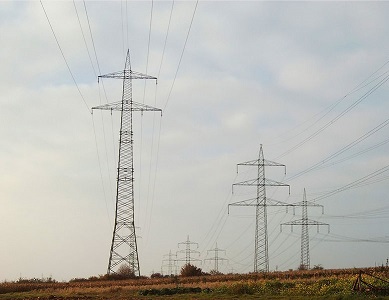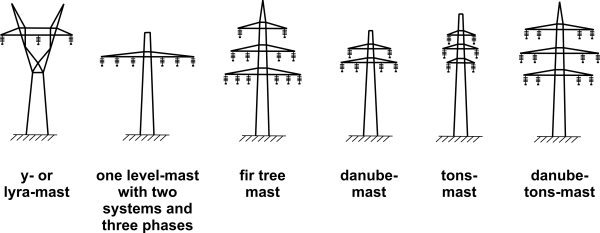Overhead power lines
Overhead power lines are used for power transmission in high and extra-high voltage systems. Electric and magnetic fields are generated by the power lines. The strength and distribution of these electric and magnetic fields in the surrounding of power lines depend on several parameters, e.g. voltage, amperage, tower shape as well as alignment, and number and slackness of the lines.

photo: H.A., license: copyright by H.A., via Wikimedia Commons
There are different types of towers (see figure) depending on their areas of application, e.g. Danube tower, waist-type tower, double-circuit tower. The most common configurations in Europe are the Danube and vertical configurations. The towers are constructed in a distance of about 400 m depending on the terrain. Cleared vegetation strips are located under the lines covering an area of about 60 m to the left and right of the lines. The lines spanned between the towers possess no insulating cover in contrast to cables. They can directly release the heat that is produced by electricity transmission to the surrounding air.

Ground measurements can only evaluate the instantaneous field strengths of the lines because the slackness of the lines is constantly changing due to the temperature and the always changing current flow.
The strongest electric field strengths occur beneath the power lines. They rapidly diminish with increasing distance from the power line. Electric fields can be shielded for example by house walls. They are distorted by trees, buildings or hills.
The strongest magnetic field strengths also occur beneath the power lines. Likewise, they rapidly diminish with increasing distance from the power lines. In contrast to the electric field, the magnetic field can only be shielded with great efforts but it can be reduced by adequate line configuration and phase optimization.
Typical measurement values are available in the database of exposure sources.